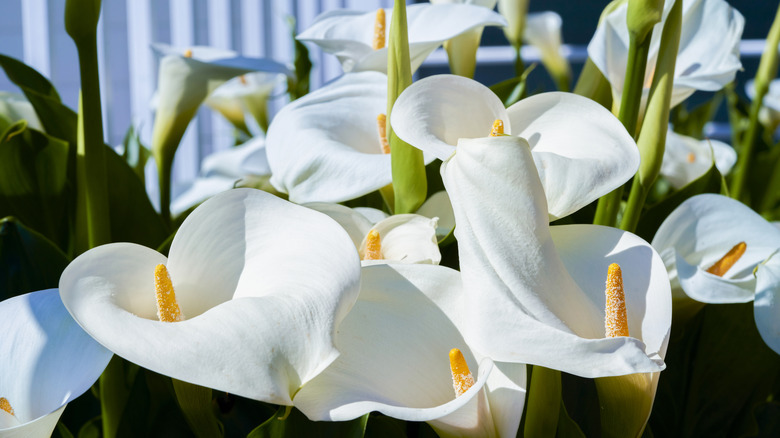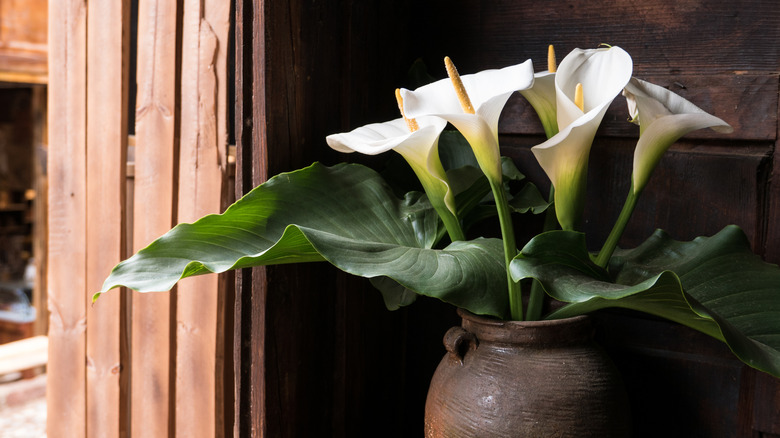Calla Lilies Need Special Care In The Fall - What To Do Now For Better Blooms Next Year
The Calla lily (Zantedeschia aethiopica) is known for its elegance and beauty. Calla lilies should be planted in the springtime to bloom in the summer, but a well-maintained calla lily has the potential to impress year after year. You may recognize the flower's unique trumpet-like shape that draws the eye with its vivid dimension: Wide white petals surround a fuzzy, tall yellow wick in the middle of each bloom. Not an actual lily, this exotic flower is instead part of the Arum family. If you want to enjoy those glorious blooms come next spring, the plant will need some special care in the fall — namely, you'll want to dig up the rhizomes when the foliage starts to flop over and store them in a cool, dark spot indoors over winter.
A calla lily's ability to thrive depends on the environment. In the right setting, this type of flower will not be difficult to plant or take care of. Suitable for USDA Hardiness Zones 8 through 10, calla lilies cannot survive outdoors during cold winters as they can be subject to frost damage. This is because they are native to South Africa, where they experience only a wet and a dry season. The contrast between the two means that the warm temperatures of summer allow the plant to blossom, but it will need a cold and dry period in the winter. Overwintering will act as a hibernation of sorts for the flowers, preparing them to be strong and plentiful when the weather warms up. During the chilly months of the year, calla lily rhizomes will require soil that is less damp with minimal exposure to light.
How to overwinter calla lilies
To survive the dropping temperatures of fall and winter, calla lilies will need to be transported inside and the rhizomes overwintered. Observing when calla lilies start to flop towards the ground is a good indication of when you should bring your plants inside this fall. At this point, you want to trim down the leaves and dig up the rhizomes. Trim the foliage back roughly one inch, wash off any remaining soil, and lay the rhizomes down in a flat box for a couple of days to dry. When dry, place them in a container that you've filled with something like straw or peat moss. Even newspaper will work, just remember to store them in a dry and dark setting. When laying out the rhizomes, try to make sure they are not touching each other to prevent rotting. Keep the temperature close to 50 degrees Fahrenheit until spring when they can be planted out once again.
Throughout the winter, continue to check on your rhizomes and make sure that bugs have not taken to them. They should not be allowed to totally dry out, so mist when necessary, just to keep them moist. Dispose of any bulbs that feel squishy as they may be rotting. You can resprout your calla lilies around one month before springtime and keep them indoors. Place the rhizomes in a pot with quality potting mix and water slightly until you see new growth. Keep the plants on a bright windowsill so they're exposed to light without being directly in the sun. Use a few simple tips for keeping your houseplants healthy in any condition. Finally, move the calla lilies to the garden when spring is in full swing.

